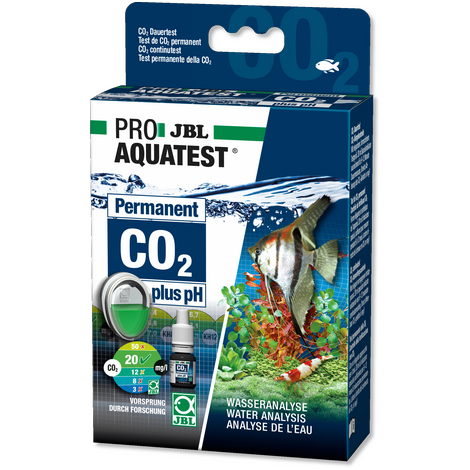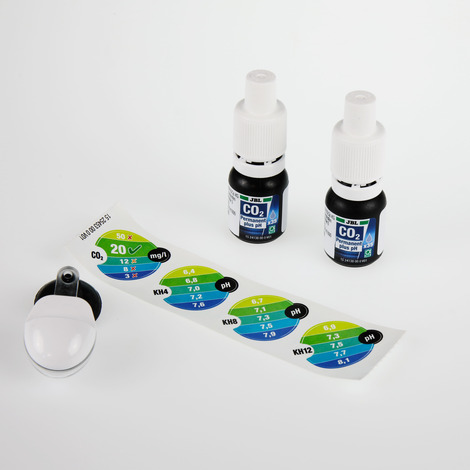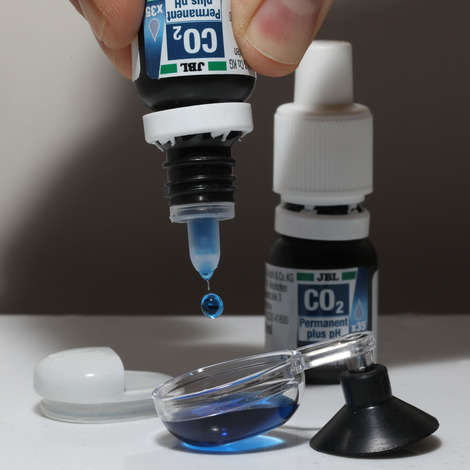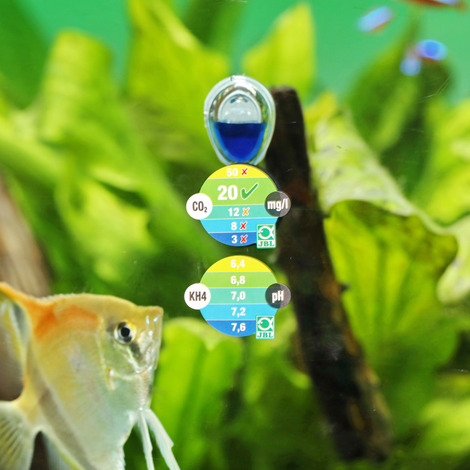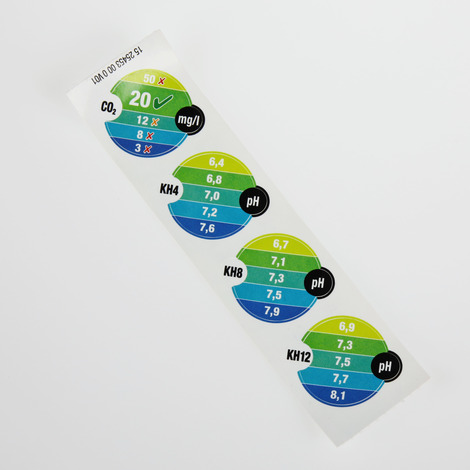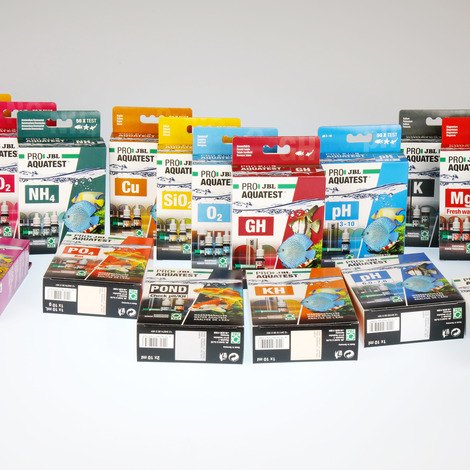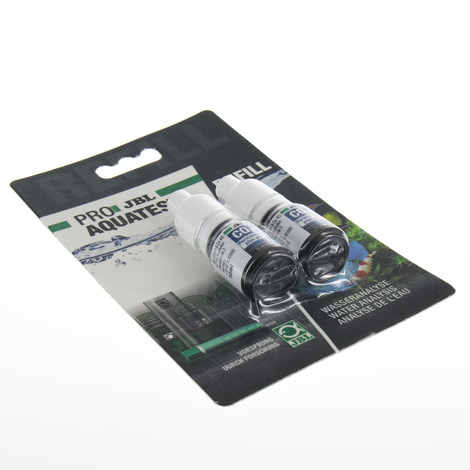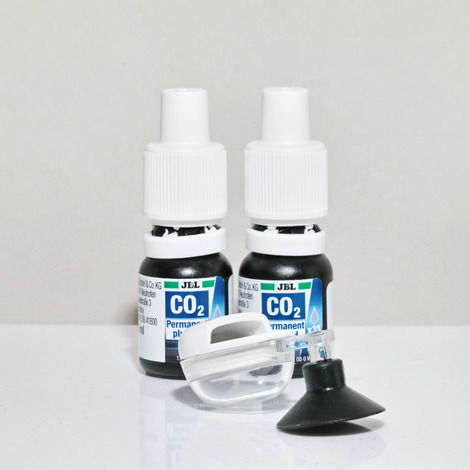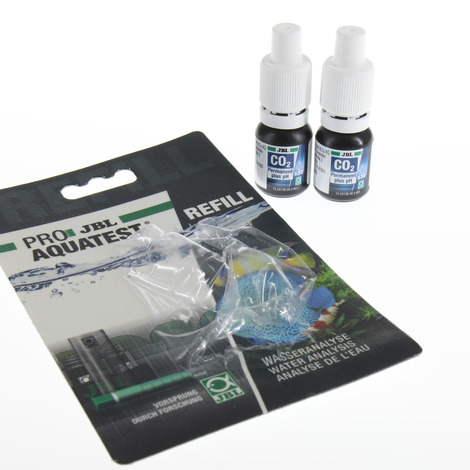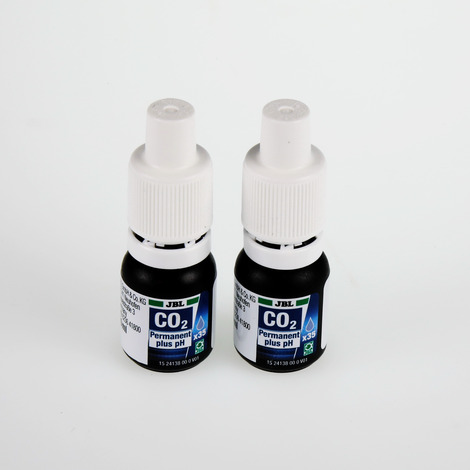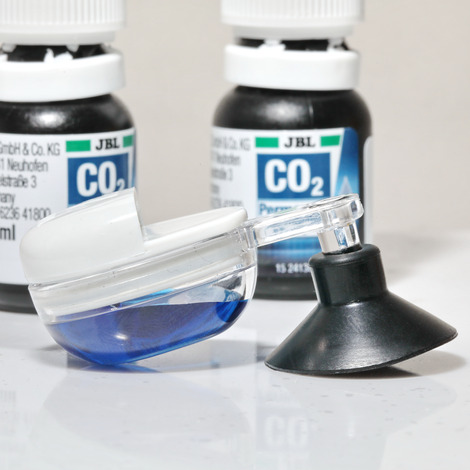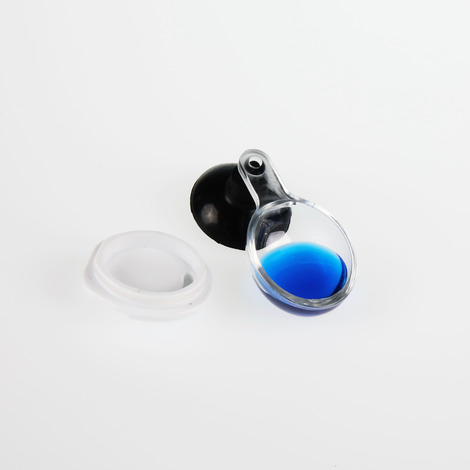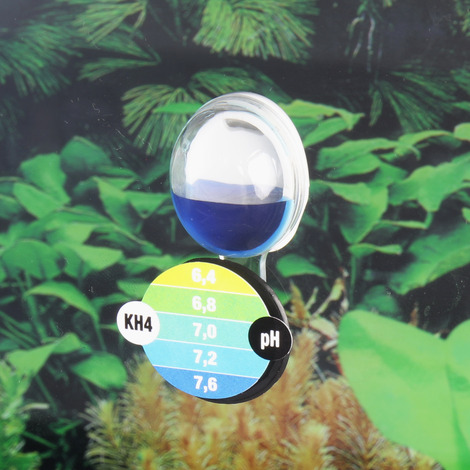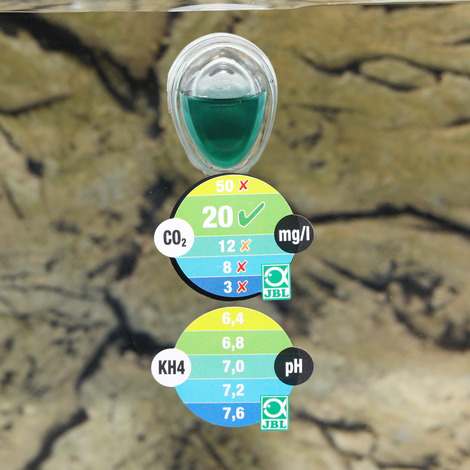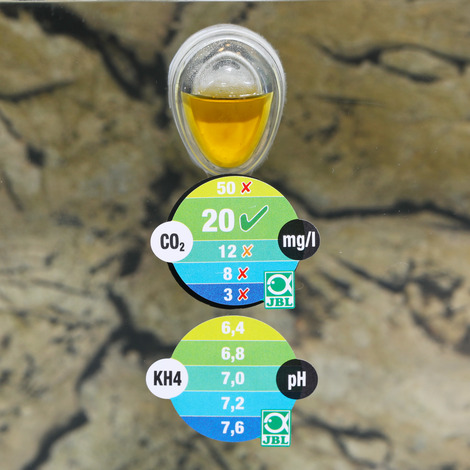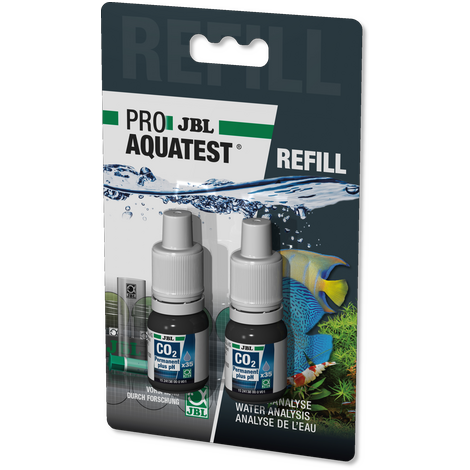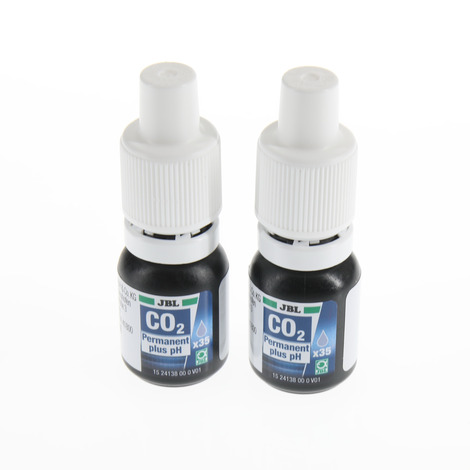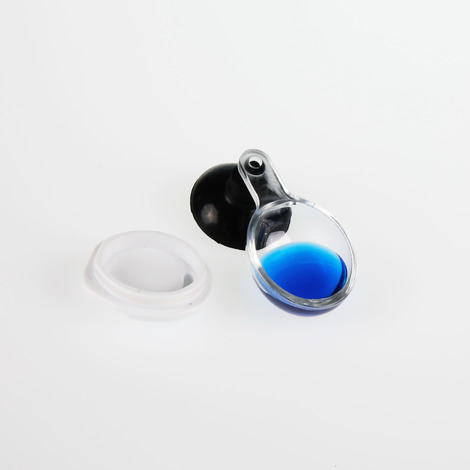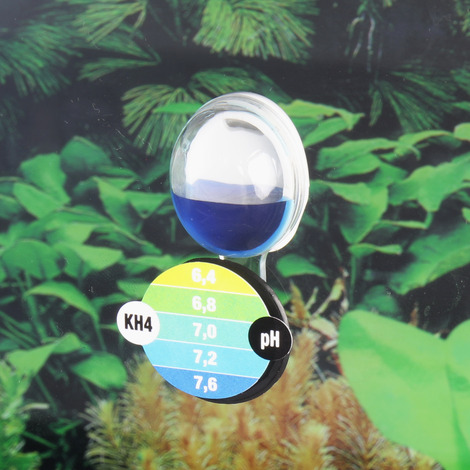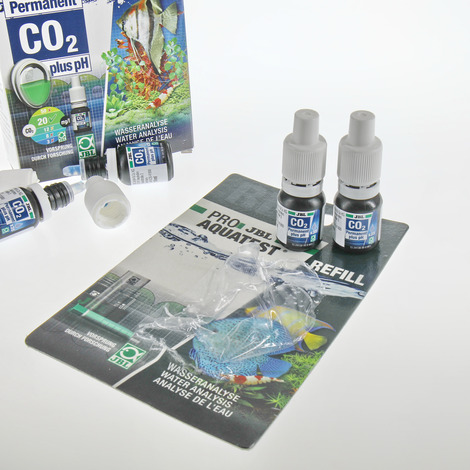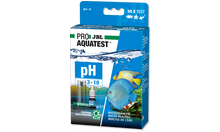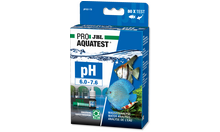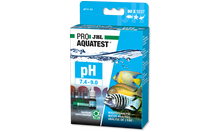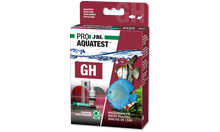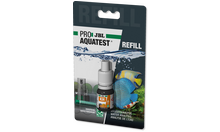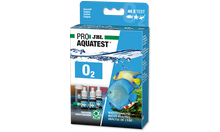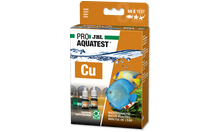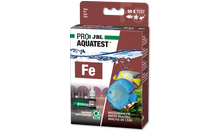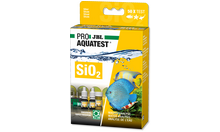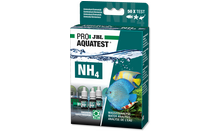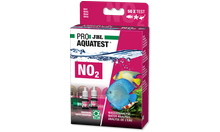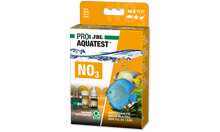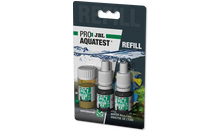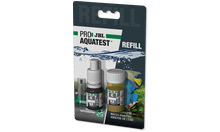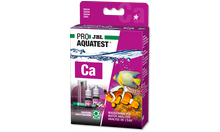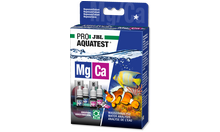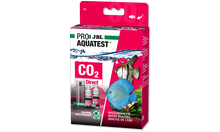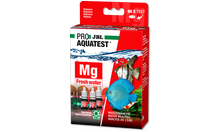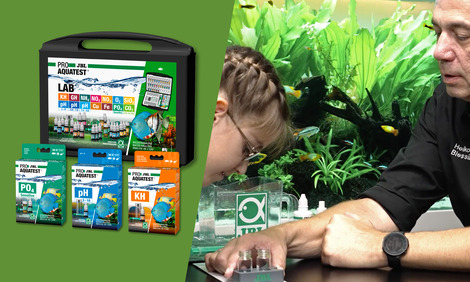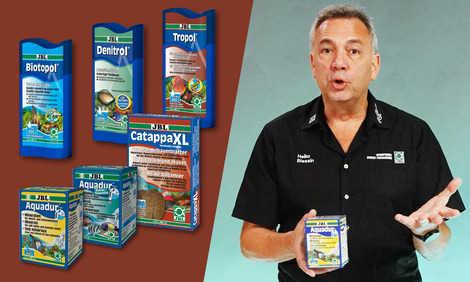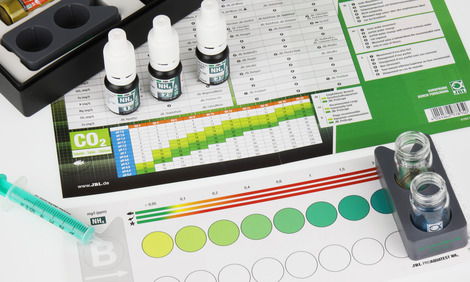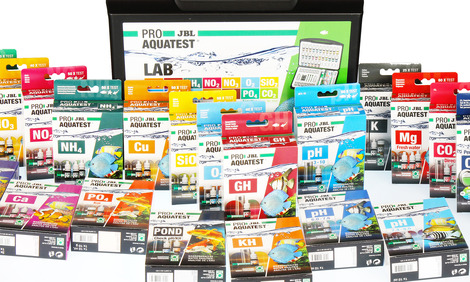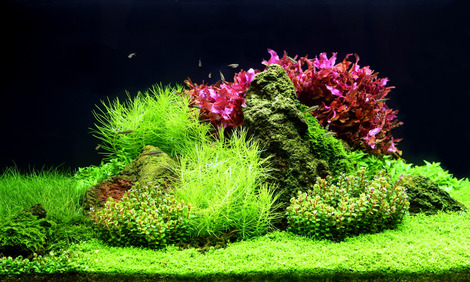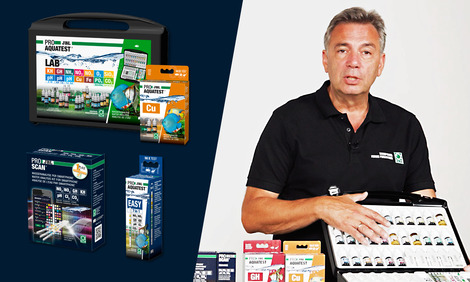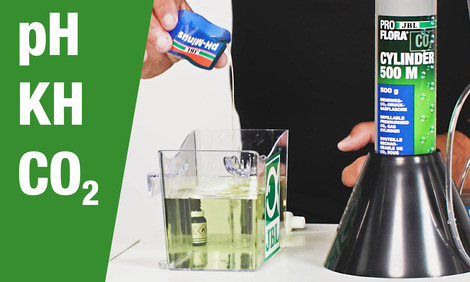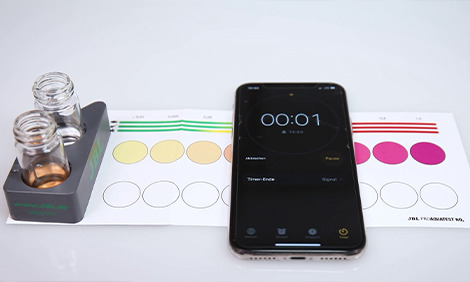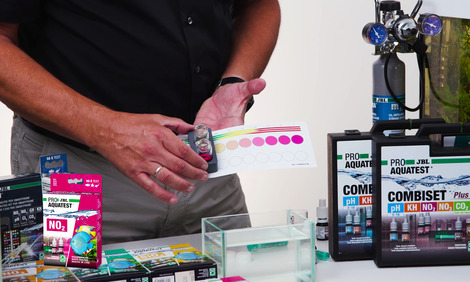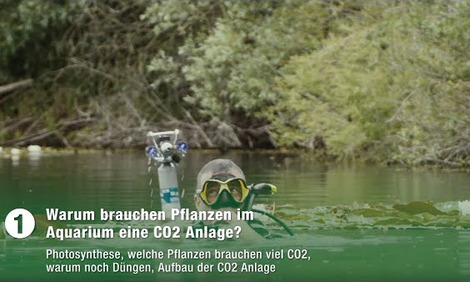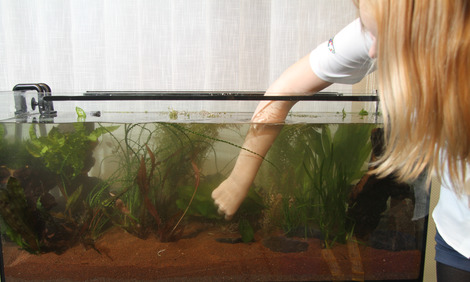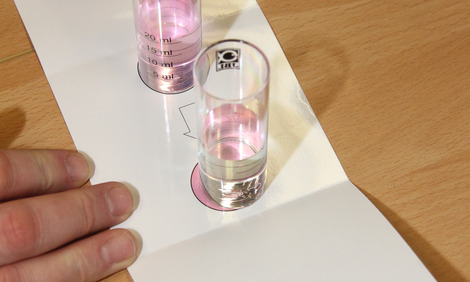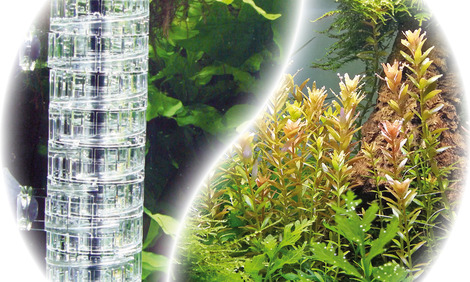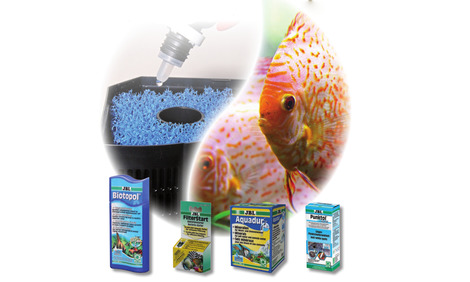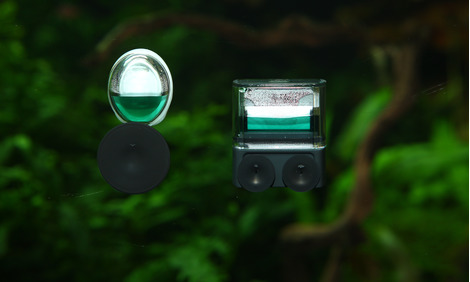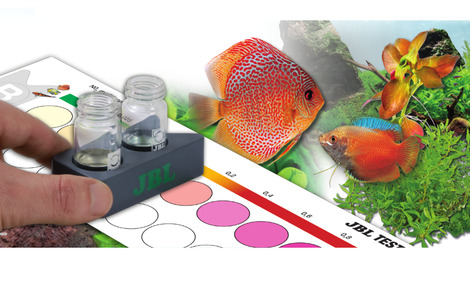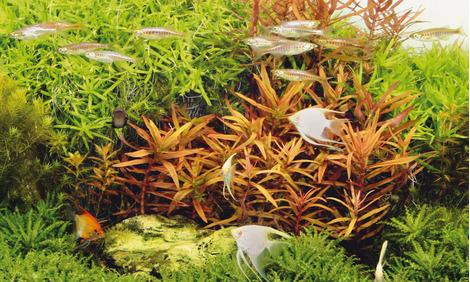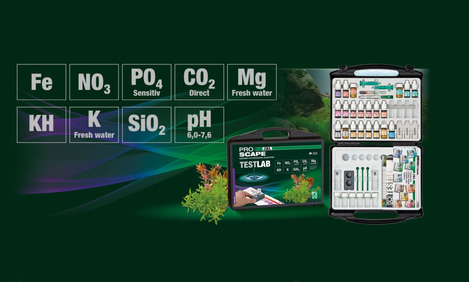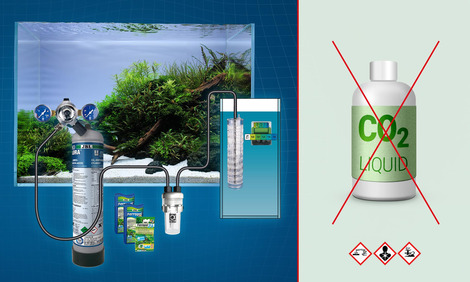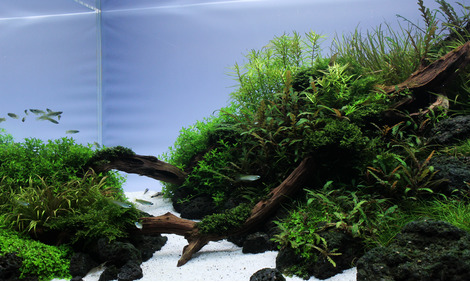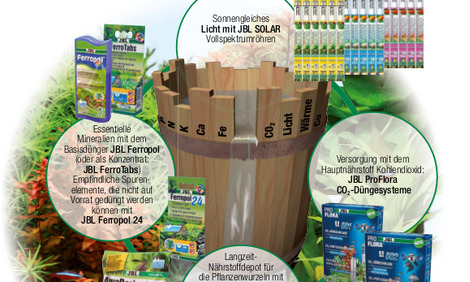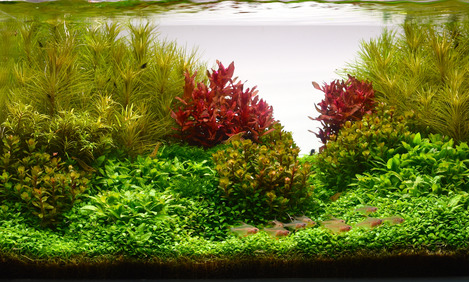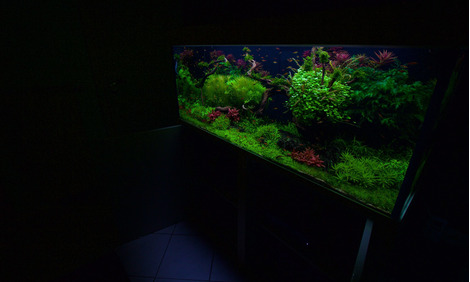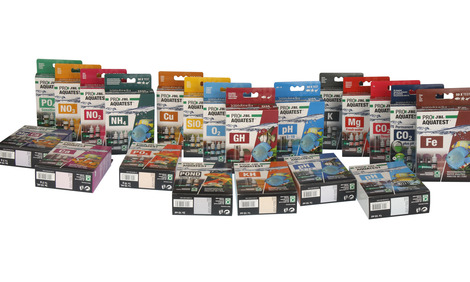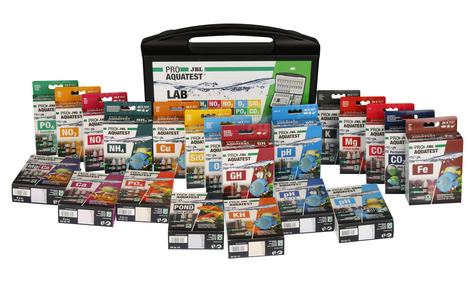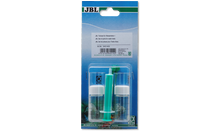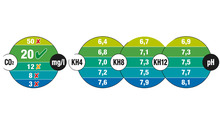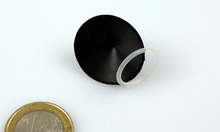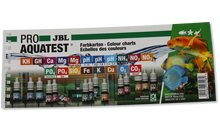This permanent indication test uses colouration to show the aquarist the pH value and the CO2 content of the aquarium water at any time.
You can read off whether the pH value is within the optimal range and whether the plants have sufficient CO2 as their main nutrient available during the day 24/7.
How exactly does the test work?
The CO2 dissolved in the aquarium water diffuses in the container of the permanent test, passes into the air column containing the indicator liquid and then dissolves in the liquid. This creates a pH value, which results in the discolouration of the indicator liquid. The colour displayed corresponds to a certain pH-value and, depending on the carbonate hardness of the water, you can read off whether the resulting CO2 content is too high, too low, or optimal.
If another pH-lowering or increasing substance (e.g. pH-Minus) apart from CO2 is added to the aquarium water, it cannot diffuse through the air column in the permanent test and thus does NOT affect the indicator liquid. In this case the pH value displayed would not be correct. It only shows correct values, when there are NO other pH-influencing substances in the water besides CO2.
How long does it take until the test displays correctly?
Due to its design the test is somewhat sluggish, because the CO2 gas needs to first "migrate" through the air column in the test vessel, then into the indicator liquid and can only then be displayed. It can therefore take up to one hour until the test shows the current CO2 content of the aquarium water for the first time.
Recommended CO2 content:
Freshwater aquarium (community aquarium): 15-35 mg/l;
Lake Malawi-Tanganyika aquarium: 4-10 mg/l;
Plant aquarium with few fish (aquascaping): 20-35 mg/l
JBL PROAQUATEST CO2-pH Permanent
Permanent test to determine the acid/carbon dioxide content in freshwater aquariums
- Simple and reliable monitoring of the aquarium water values. Permanent direct measurement of the pH value and carbon dioxide content in freshwater aquariums
- Permanent test for fertiliser control: place reagent in the permanent test device and attach to the aquarium pane, using suction cups. Compare reagent colour with colour scale sticker and read off value
- Indication of pH value (6.4 – 7.8) and CO2 content
- You will find detailed information and troubleshooting tips about water analysis on the JBL website in Essentials/Aquarium
- Package contents: 1 CO2-pH permanent test, display vessel with suction cup, 1 reagent (+ 1x refill) and colour scale sticker. Reagent refill and indicators separately available
You may also be interested in
JBL PROAQUATEST CO2-pH Permanent
Properties
| Animal species: | Armored catfish, Arowana, Axolotl, Barbels, Bettas, Bichirs/reedfish, Blowfish, Catfish, Cichlids (South America), Clawed frogs, Clawed shrimps, Crayfish, Crustaceans, Danions, Discus, Dwarf crayfish, Dwarf shrimps, Flowerhorn, Gill maggots, Goldfish, Gouramis, Guppy, Juvenile fish, Killifish, Livebearers, Loaches, Mussels, Newts, Panchaxes, Rainbowfish, Snails, Spiny eels, Tetra, Veiltails, blood parrot cichlids, freshwater butterflyfish |
| Animal size: | For all animal sizes |
| Animal age group: | All aquarium fish |
| Material: | Reagent(s) in plastic bottle(s) and/or glass bottle(s) + plastic and/or glass accessories. REFILL: reagent(s) without accessories. |
| Colour: | white / transparent / black |
| Dosage: | See instructions |
Electronic label / illuminant
| Mercury: | No |
| Dimmable: | No |
JBL PROAQUATEST CO2-pH Permanent REFILL
Properties
| Animal species: | Armored catfish, Arowana, Axolotl, Barbels, Bettas, Bichirs/reedfish, Blowfish, Catfish, Cichlids (South America), Clawed frogs, Clawed shrimps, Crayfish, Crustaceans, Danions, Discus, Dwarf crayfish, Dwarf shrimps, Flowerhorn, Gill maggots, Goldfish, Gouramis, Guppy, Juvenile fish, Killifish, Livebearers, Loaches, Mussels, Newts, Panchaxes, Rainbowfish, Snails, Spiny eels, Tetra, Veiltails, blood parrot cichlids, freshwater butterflyfish |
| Animal size: | For all animal sizes |
| Animal age group: | All aquarium fish |
| Material: | Reagent(s) in plastic bottle(s) and/or glass bottle(s) + plastic and/or glass accessories. REFILL: reagent(s) without accessories. |
| Colour: | white / transparent / black |
| Dosage: | See instructions |
Electronic label / illuminant
| Mercury: | No |
| Dimmable: | No |
Have you lost your record sheets, used them all up, or need them in another language?
In the appendix of this FAQ you will find PDF files for printing them out in German, English and French.
Depending of the dosage it is quite possible that the ozone attacks the indicator of the CO2 permanent test and “oxidizes”. A reasonable continuous measurement of CO2 is then not possible with this method.
The fluid itself with the colour indicator is not harmful in any way with the high dilution in the tank and, in addition, it decomposes very quickly.
If one of your measurements reaches the end of the colour chart scale you can multiply the scale by diluting later tests with distilled water (e.g. JBL Dest).
Here’s how to do it: dilute the sample with distilled water and carry out the test once more.
This works in detail as follows:
GH test: Instead of 5 ml use 10 ml aquarium water. Now 1 drop is equivalent to 0.5 dGH.
KH test: Instead of 5 ml use 10 ml aquarium water. Now 1 drop is equivalent to 0.5 dGH.
Note: when using 10 ml sample water the colour development is weaker with the first drops than with 5 ml sample water. Put the measuring container on a white underlay for a better readability.
NH4/NH3 ammonium/ammonia, NO2 nitrite, Fe iron and Cu copper:
2.5 ml sample + 2.5 ml dist. water: result times 2
1 ml sample + 4 ml dist. water: result times 5
0.5 ml sample + 4.5 ml dist. water: result times 10
NO3 nitrate, SiO2 silicate, PO4 phosphate sensitive and Mg magnesium freshwater:
5 ml sample + 5 ml dist. water: result x 2
2 ml sample + 8 ml dist. water: result x 5
1 ml sample + 9 ml dist. water: result x 10
PO4 phosphate koi high range:
2.5 ml sample + 2.5 ml dist. water: result x 2
1 ml sample + 4 ml dist. water: result x 5
K potassium:
7.5 ml sample + 7.5 ml dist. water: result x 2
3 ml sample + 12 ml dist. water: result x 5
1.5 ml sample + 13.5 ml dist. water: result x 10
K potassium in marine water:
1. Fill 10 ml of sample water with distilled water to 300 ml.
2. Follow the instructions for fresh water.
3. Multiply the test result by a factor of 30.
CO2 direct, Ca calcium and Mg+Ca magnesium+calcium: not required.
No CO2 is generated when fertilising with so-called liquid carbon. Therefore the test is not able to indicate CO2, which means that the indicator always remains blue! If you add CO2 in gas form you need to increase the amount or the duration.
No, the two statements do not contradict each other.
The indicator reacts to the pH value of the test liquid. The indicator in the JBL CO2/pH-Permanent test only changes colour because of the carbon dioxide which has diffused from the water into the test liquid.
Humic acids or other acids have a pH-reducing effect. As a result the real pH value in the aquarium water can be lower than that shown in the indicator, which is only influenced by the diffused carbon dioxide inside the water.
It is very likely that a bacterial biofilm has formed in the container. Please place the reaction vessel in hot water (> 40 °C) for approx. 10 minutes. In order to do so, it must be taken apart and then put together again afterwards. Please do not use boiling water, as this may cause damage to the plastic.
Yes, the drop count is correct. This is the reason why two bottles of indicator solution are included with the test set. With the new JBL CO2/pH Permanent test set the indicator solution is no longer prepared in the aquarium water. The indicator is adjusted to a fixed carbonate hardness so that incorrect measurements (as when humic acids enter the aquarium water) can no longer occur.
Basically a sealed test keeps longer than an open one. How much the shelf life is reduced depends crucially on the handling and the storage conditions of the reagents. It may happen that a reagent in a test that has been open for 9 months doesn’t indicate correctly any more. However, additional information is needed to answer this question properly.
Reviews
0 Reviews
6 more reviews in other languages
6 Reviews in other languages
Nutze es schon seit Jahren, man muss nur ab und zu mal die Testflüssigkeit erneuern. Gibt es eigentlich auch die Saugnäpfe zum nachbestellen?
Ja gibt es. https://www.jbl.de/?mod=products&func=detail&id=8391&country=de&lang=de#6729800
Der JBL PROAQUATEST CO2-pH Permanent zeigt zuverlässig den CO2 Gehalt, durch Farbumschlag an.
Der Dauertest lässt sich gut anbringen und ist einfach abzulesen.
Ich bin super Zufrieden mit Co2 Dauertestvon JBL . Erzeugt verlässlich die Co2 Werte im Wasser an . Top Sache.
Dieser Dauertest ist sehr zuverlässig und zeigt durch seine Farbe den genauen CO2 Gehalt im Aquarium an.
Verwende diesen CO2 Permanent Test in meinen 60 Liter! Dieses Tool ist ein muss in einem Bepflanzten Becken sonst wird es schwierig die Pflanzen richtig zum wachsen zum bringen!
Uwielbiam ten test . Napełnianie jest bajecznie proste. Po umieszczeniu go w akwarium , nie tracisz czasu na robienie osobnego testu. Wystarczy tylko spojrzeć na kolor i już wszystko wiesz . To mój ulubiony test
